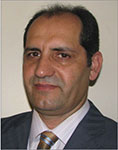Improving reservoir performance using intelligent well completion sensors combined with surface wet-gas flow measurement
Nematollah Tarom A and Mofazzal Hossain ACurtin University
The APPEA Journal 52(1) 181-188 https://doi.org/10.1071/AJ11013
Published: 2012
Abstract
Reservoir performance, in addition to day-to-day well performance, needs to be evaluated during the life of a well. The production logging tool (PLT) is conventionally designed to provide a full set of data measurements in producing wells to evaluate well and reservoir performance. Depending on the well conditions and location, running conventional PLTs may be difficult, impossible or expensive. Therefore, an alternative approach that can be applied in lieu of PLT operations—to obtain information similar to PLTs for better reservoir management—and that can optimise reservoir production performance is desireable. Data acquisition techniques such as downhole pressure/temperature gauges, fibre optic sensors at reservoir conditions and wet-gas flow meters at the surface have been considered as a viable alternative. Such data acquisition techniques help to increase flexibility in the field development and reservoir management of problematic wells with well completion technologies such as multi-lateral, horizontal and artificial lift.
This study focused on the development of an alternative method of analysing problem well data on the basis of downhole pressure and temperature data collected at reservoir conditions. The proposed model has been based on the Joule-Thomson effect and radial heat and fluid flow equations to solve the transient wellbore pressure and temperature equations. It is expected this model can be used to analyse intelligent wells completed with downhole pressure and temperature sensors, and facilitate the monitoring of wells and reservoir performance without any PLT operation, especially for complex fields.

Nematollah Tarom is a PhD candidate in the Department of Petroleum Engineering at Curtin University (Perth). He has more than 16 years’ field experience in the oil and gas industry. Nematollah focused on intelligent well completion systems. Prior to his time at Curtin University, Nematollah worked for the National Iranian Oil Company (NIOC) as a production engineer from 1993–97 and as a well completion engineer from 1997–2009. Nematollah holds a B.Sc and a M.Sc in Petroleum Engineering from the University of Petroleum Industry (Ahwaz, Iran) and Tehran University (Iran), respectively. n.tarom@postgrad.curtin.edu.au |

Dr Mofazzal Hossain is a senior lecturer, postgraduate course coordinator, and SPE faculty advisor at the Department of Petroleum Engineering in Curtin University. He has more than 14 years of experience in teaching, research and consulting work, with a major focus in the areas related to well technology and petroleum production technology. He has worked with the University of Adelaide and UNSW, Saudi Aramco and the King Saud University in Saudi Arabia, and the Reservoir Engineering Research Institute (Palo Alto). His research and works encompass reservoir stimulation by hydraulic fracturing for improved production from unconventional tight/shale gas reservoir, completion optimisation, rock fracture mechanics and wellbore stability. Dr Hossain received his PhD in Petroleum Engineering from UNSW. Member: SPE and IEA. md.hossain@curtin.edu.au |


